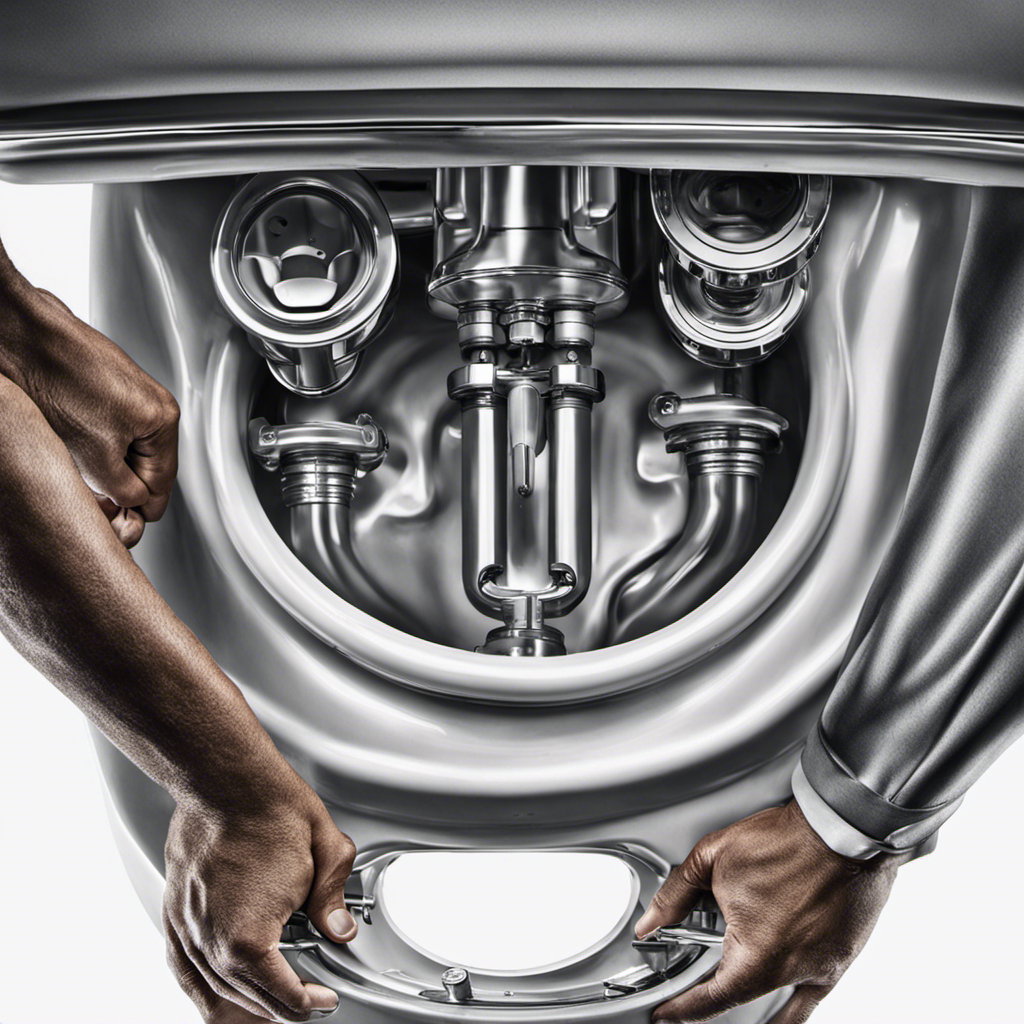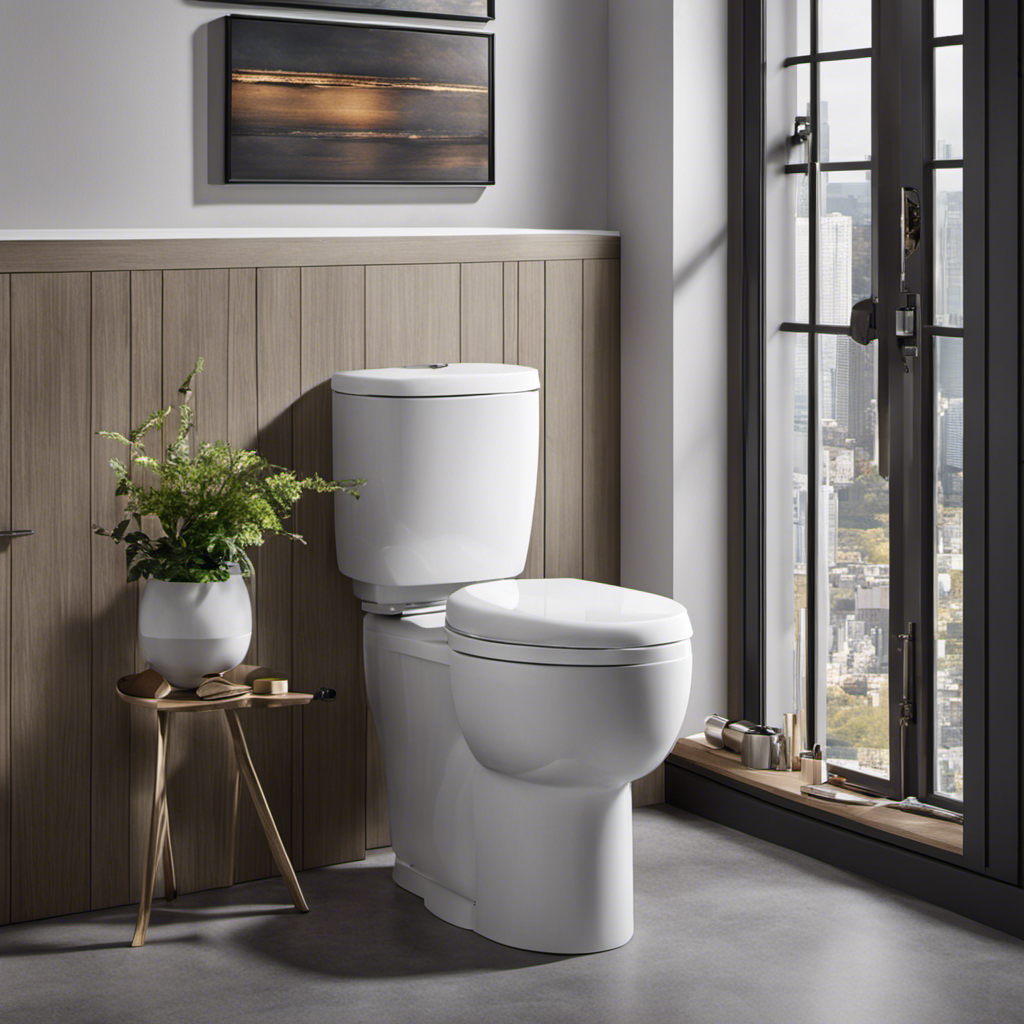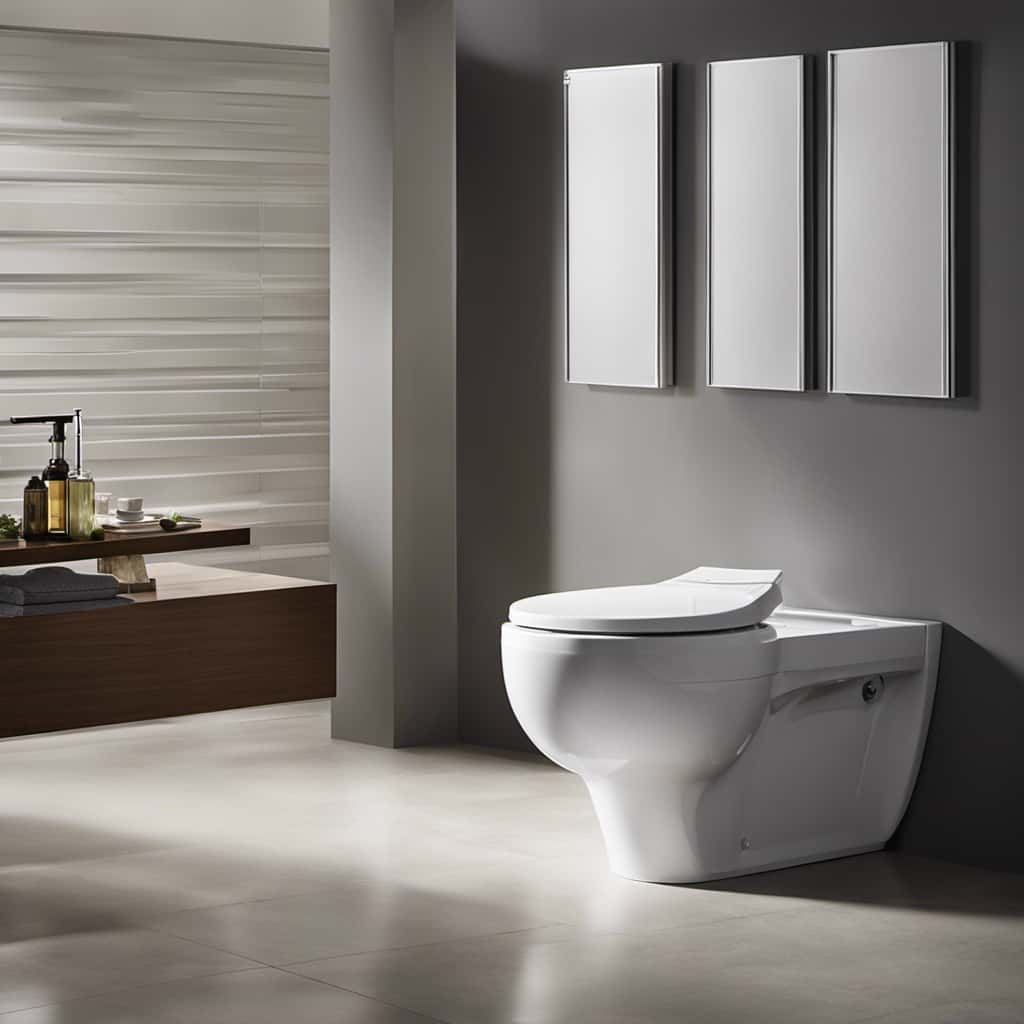Hey there! Ever experienced that panic-inducing moment when your toilet starts overflowing? Trust me, I’ve been there too. But fear not! In this step-by-step guide, I’ll show you how to quickly and effectively stop an overflowing toilet.
From assessing the situation to locating the shut-off valve and clearing the clog, we’ll cover it all.
So, grab your plunger and let’s dive into the world of toilet-saving techniques. You’ll be the hero of your bathroom in no time!
Key Takeaways
- Assess the situation and seek professional help if the damage is extensive.
- Locate and turn off the shut-off valve to prevent further water supply.
- Turn off the main water supply to fully stop the water from overflowing.
- Clear the clog by using a plunger and maintaining a tight seal with the drain.
Assess the Situation
First, you need to check if the water is still rising or if it has stopped. This step is crucial in assessing the extent of the problem and determining the appropriate course of action.
Start by turning off the water supply to the toilet. Locate the shut-off valve, usually located behind or near the toilet. Turn it clockwise to stop the flow of water.
Once the water is stopped, evaluate the damage. Look for any signs of leakage or water damage on the floor, walls, or nearby fixtures. If the damage is extensive, it’s best to seek professional help. A plumber can identify the root cause of the overflow and fix any underlying issues to prevent future incidents.
Locate the Shut-Off Valve
To prevent further water damage, you’ll need to find and use the shut-off valve. The shut-off valve is an essential component of your toilet’s plumbing system, and locating it is crucial in emergency situations.
Here is a step-by-step guide on how to locate the shut-off valve:
-
Start by looking behind the toilet bowl. The shut-off valve is usually located on the wall, directly behind the toilet.
-
Once you have located the valve, turn it clockwise to shut off the water supply. This will stop the flow of water to the toilet.
-
If you cannot find the shut-off valve behind the toilet, check other areas such as the basement or crawl space. It may be located there instead.
Turn off the Water Supply
Next, you’ll want to locate the main water supply valve and turn it off to prevent any further water damage. This step is crucial in preventing damage and minimizing the mess caused by an overflowing toilet. Here’s a step-by-step guide to help you turn off the water supply:
- Find the water supply valve, usually located either behind or near the toilet.
- Turn the valve clockwise to shut off the water flow.
- If the valve is difficult to turn or is stuck, you may need to use a wrench to loosen it.
- Once the valve is fully closed, the water flow to the toilet should stop, preventing any additional water from overflowing.
Clear the Clog
Once the water supply valve is turned off, you can start clearing the clog using a plunger. Here’s a step-by-step guide on how to do it:
- Position the plunger over the toilet drain, making sure it covers the entire opening.
- Apply downward pressure and start plunging vigorously. The goal is to create suction and dislodge the clog.
- Make sure to maintain a tight seal between the plunger and the drain to maximize the effectiveness of your plunging.
- Continue plunging for a few minutes, taking breaks if necessary. The clog may require multiple attempts to clear.
- Once the clog is cleared, turn the water supply valve back on and flush the toilet to ensure proper drainage.
Remember, preventive measures such as avoiding flushing large amounts of toilet paper or non-flushable items can help prevent clogs. If the clog persists or if you’re unsure about handling it yourself, it’s always best to seek professional help.
| Step | Instructions |
|---|---|
| 1 | Position the plunger over the toilet drain. |
| 2 | Apply downward pressure and start plunging vigorously. |
| 3 | Maintain a tight seal between the plunger and the drain. |
| 4 | Continue plunging for a few minutes, taking breaks if necessary. |
| 5 | Turn the water supply valve back on and flush the toilet. |
Clean up and Prevent Future Overflows
Make sure you thoroughly clean up any water that has spilled and take steps to prevent future overflows. Here are some preventive measures you can take:
-
Install a toilet overflow alarm: This device will alert you if the water level in the toilet bowl is too high, allowing you to take action before it overflows.
-
Adjust the water level: Most toilets have a water level adjustment screw or valve. Make sure it is set at the correct level to prevent overflow.
-
Avoid flushing excessive amounts of toilet paper or other waste: This can cause clogs and lead to overflow.
-
Schedule regular maintenance: Hiring a professional plumber for routine inspections and maintenance can help identify and fix potential issues before they become emergencies.
In case of a severe overflow or if preventive measures are not enough, it’s always a good idea to have the contact information of emergency plumber services readily available.
Frequently Asked Questions
What Should I Do if I Can’t Locate the Shut-Off Valve for the Toilet?
If I can’t locate the shut-off valve for the toilet, I would first try looking near the base of the toilet or behind the toilet tank. If that doesn’t work, I would consider alternative solutions like turning off the main water supply or seeking professional help.
Are There Any Household Items I Can Use to Clear a Clog in the Toilet?
I can use household items and natural remedies to clear a clog in the toilet. First, I can try using a plunger or a mixture of baking soda and vinegar.
How Can I Prevent Future Toilet Overflows From Happening?
To prevent future toilet overflows, I can share some toilet maintenance and plumbing tips. By following these steps, you can ensure your toilet functions properly and avoid any messy situations in the future.
Is It Safe to Use Chemical Drain Cleaners to Clear a Clog in the Toilet?
Using chemical drain cleaners in a toilet can be unsafe due to their toxicity concerns. It’s best to explore alternative methods, such as using a plunger or a toilet auger, to clear a clog.
What Should I Do if the Toilet Continues to Overflow Even After Turning off the Water Supply?
If the toilet keeps overflowing even after shutting off the water supply, it can be a messy situation. Here’s what to do when you can’t find the shut-off valve and need to handle a toilet overflow.
Conclusion
Well, that was quite the adventure! I never thought I would find myself knee-deep in toilet water, but thanks to these simple steps, I was able to stop the overflowing toilet and prevent any further disaster.
It was like trying to tame a wild river, but with the right tools and a little bit of know-how, I was able to get the situation under control.
So remember, when life throws you an overflowing toilet, don’t panic. Just follow these steps and you’ll be able to save the day!










